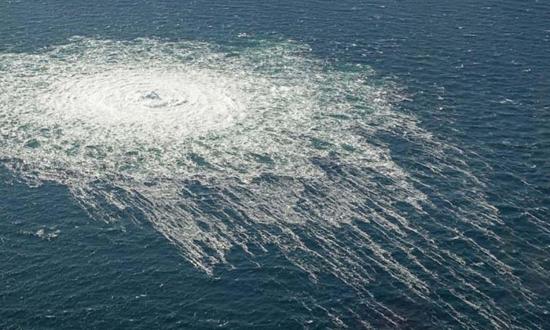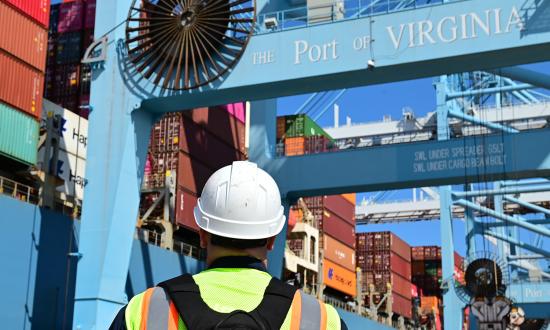When the cargo carrier Dali hit and destroyed the Francis Scott Key Bridge early on 26 March, Baltimore’s harbor and one of the main roadways were shut down, possibly for months. All evidence to date points toward a tragic accident. Regardless of the ultimate cause, it remains possible this could be a precursor of worse to come. Just as 9/11 revealed that commercial airliners could become weapons of war, parallels can be drawn at sea with ships—especially with ships longer than 1,000 feet and a 100,000-ton displacement (about the size of U.S. nuclear-powered aircraft carriers). No one is certain if this event will offer a new vulnerability to be exploited whether through sabotage, cyberattack, or hijacking.
The Francis Key Scott Bridge Collision
Analysis will uncover the ultimate cause of the collision. As a former naval officer who commanded destroyers and Swift Boats, I would argue that the Dali potentially losing propulsion may not be one of them. A ship of that size and tonnage sailing at eight knots (or nine miles per hour) would have travelled three to five miles before she would have stopped.
The likely cause was a casualty to her steering following a loss of electrical power. The Dali only had a single propeller and a single rudder. If the rudder had jammed or been shifted hard over in one direction, that could have caused the allision. In that scenario, it would have been impossible to stop the ship because of her momentum, even after dropping an anchor. Until a comprehensive investigation is completed that considers all possibilities, including malign actions such as sabotage or even a cyberattack, judgment must be withheld.
Regardless, the massive disruption the Dali caused is not a new phenomenon—nor has this disruptive potential been lost on those with less than benign intentions. After the October 1973 Arab-Israeli War, the Suez Canal was blocked for about a year. More recently, the cargo ship Ever Given went aground, closing the canal for six days in 2021 at a cost to the global economy of $400 million per hour. Instead of targeting transiting ships in the Red Sea, consider what would happen if the Houthis hijacked a merchant ship and grounded her in the Suez.
A very dangerous—though unlikely—maritime scenario was devised for the City of New York in a private study by Stevens Tech after 9/11 that did not entail a nuclear, biological, or chemical weapon. Imagine a 300,000-ton ship steaming into New York harbor at 20 knots (23 miles per hour). Instead of heading for the piers on the west side of Manhattan or in New Jersey, the ship steers for Wall Street or the southern tip of the island.
Looking Forward
The sheer momentum of a ship that size ramming ashore would be catastrophic. And if such a supersized ship was loaded with thousands of tons of explosive material, whether C-4 or nitrates, and was detonated, the kinetic effect could be greater than the atomic bombs that destroyed Hiroshima and Nagasaki. Much of Manhattan south of Midtown could be destroyed.
Unlike hijacking airlines, terrorist organizations such as ISIS or Al-Qaeda probably lack the resources to mount such an operation with a ship. However, the potential for lesser attacks to disrupt and shut down chokepoints and ports must be taken seriously. Fortunately, the danger of a nuclear weapon being containerized on board a ship has been largely eliminated by existing preventative measures, but the possibility of a hijacked ship becoming a disruptive weapon must prompt further action. As the case of the Dali has shown, the vulnerability of maritime infrastructure to supersized ships is a danger that can no longer be deferred or dismissed.
The urgency of infrastructure protection is not new. Storms, fires, droughts, floods, and unpredictable destructive events are worsening. Given societal dependence on the electrical grid, water distribution, financial, telecommunications, health care, and other infrastructure systems that can be disrupted or crippled by cyber or physical attacks, the Dali incident is proof of the need to treat this potential danger seriously.
It would not be difficult to plot several near simultaneous hijackings of merchant ships by relatively small teams who then turn those ships into weapons of mass disruption to attack ports and maritime facilities. The effects on national and global commerce even for a few days or weeks would be very damaging. It would be folly to wait for a future maritime 9/11-like catastrophe to galvanize action. The U.S. government must prepare for and anticipate these disruptive scenarios.
For example, steps should be taken to harden ships’ bridges just as airplane cockpits were armored to prevent hijackings. Regardless of the ultimate cause of the Baltimore collision, steering and propulsion controls on large ships should be protected from cyberattacks. Finally, large port equipment and stationary bridges must be protected from potential disruptive attacks in the future. These and other common-sense steps are essential to assure potential vulnerabilities cannot be exploited in the future.






